Refractory Brick Composition Predicition for Bricks from Cement Rotary Kilns
ReSoURCE application note
ReSoURCE application note
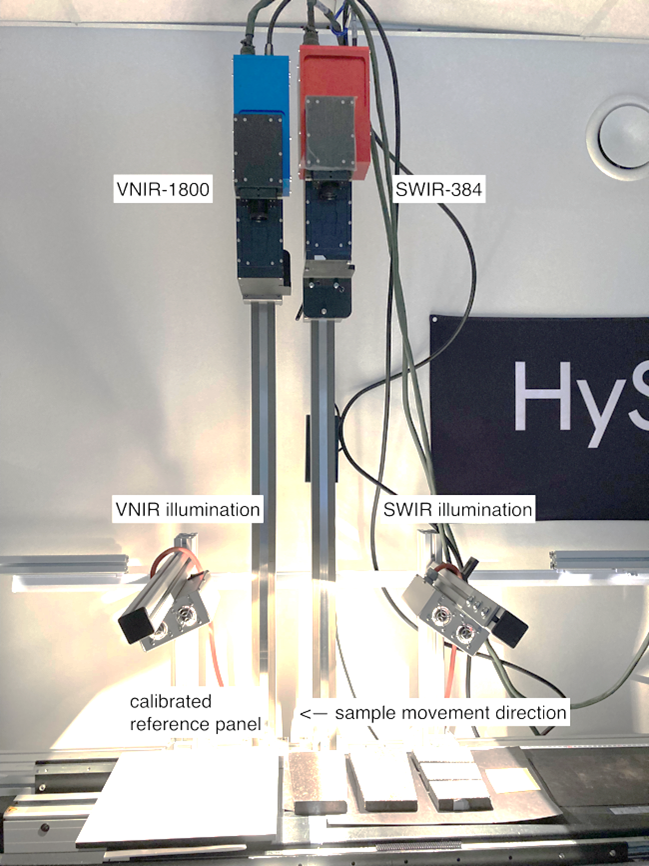 Figure 1: Laboratory setup for scanning refractory bricks with the HySpex VNIR and SWIR cameras. The EU-funded ReSoURCE project aims to increase the recovery of spent refractory bricks by sensor-based automated sorting. The project concentrates on spent bricks obtained from cement rotary kilns (CRK) and steel casting ladles (SCL) as feedstock. The developments in the project shall enable a fast and accurate sorting process to introduce recycled materials back into the production of new bricks without compromising on product quality. Innovative technologies for recycling processes such as hyperspectral imaging will be a key to reach these goals. Global leader in the refractory business RHI Magnesita (RHIM) is coordinating the ReSoURCE project with the aim of evolving sensor-based automated sorting combining HySpex hyperspectral imaging cameras as well as laser-induced breakdown spectroscopy (LIBS) equipment from LSA GmbH, Fraunhofer ILT and InnoLas Laser GmbH in an optimized sorting system.
Figure 1: Laboratory setup for scanning refractory bricks with the HySpex VNIR and SWIR cameras. The EU-funded ReSoURCE project aims to increase the recovery of spent refractory bricks by sensor-based automated sorting. The project concentrates on spent bricks obtained from cement rotary kilns (CRK) and steel casting ladles (SCL) as feedstock. The developments in the project shall enable a fast and accurate sorting process to introduce recycled materials back into the production of new bricks without compromising on product quality. Innovative technologies for recycling processes such as hyperspectral imaging will be a key to reach these goals. Global leader in the refractory business RHI Magnesita (RHIM) is coordinating the ReSoURCE project with the aim of evolving sensor-based automated sorting combining HySpex hyperspectral imaging cameras as well as laser-induced breakdown spectroscopy (LIBS) equipment from LSA GmbH, Fraunhofer ILT and InnoLas Laser GmbH in an optimized sorting system.
Recycled material (used bricks) from cement rotary kilns (CRK) were provided by RHI Magnesita . Used recycled bricks of different compositions from different CRK facilities were scanned using the HySpex VNIR-1800 and SWIR- 384, see Figure 1.
Two different brick composition models were trained based on RHIM labels for thecement rotary kiln (CRK) bricks. In this initial feasibility study, only the SWIR data isbeing used to train a model. The goal is to classify the bricks based on three existingsorting classes:
A brick composition type model was trained based on the CRK samples. Here, both theoriginal (unused) and used bricks of brick types A, B, and, C were scanned. Using Prediktera’s Breeze software, the original and the used bricks were segmented from thebackground and labeled based on their overall brick composition type. A PLS-DAclassification model was trained within Breeze to differentiate between the main bricktypes. By subsampling each sample by a 3x3 grid (see Figure 2 ) and balancing the trainingsample set per class, a total of 341 sub-samples were used to train the model, of which 190were used for training and 151 for testing using all 288 bands of the shortwave infrareddata (SWIR).

This PLS-DA model predicts 97.4% of the training dataset correctly. For the test set (30%of the samples) 96.7% of the samples are predicted correctly. Predictions were done on apixel level and based on pixel class majority (pixel count) as well as the average spectrumof the segmentation.
| Sample | Brick composition type | Classifications | ||
|---|---|---|---|---|
| Per Pixel | Average Spectrum | Pixel Class Majority | ||
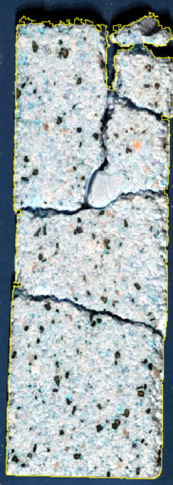 |
Brick Type A (original) | 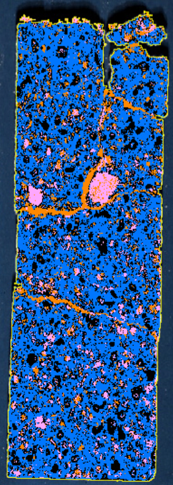 |
Type A | Type A |
 |
Brick Type B (original) |  |
Type B | Type B |
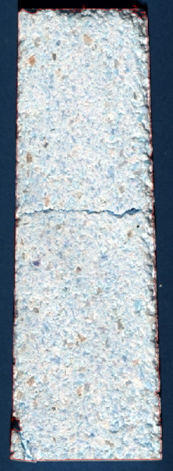 |
Brick Type C (original) | 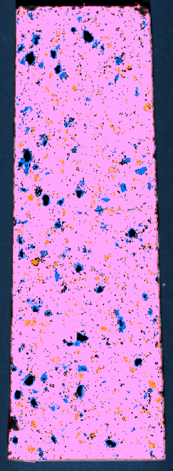 |
Type C | Type C |
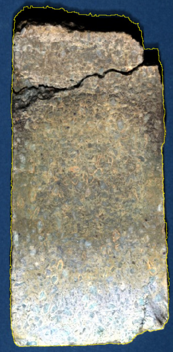 |
Brick Type C (used) | 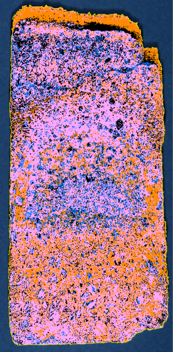 |
Type C | Type C |
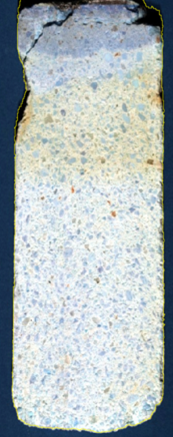 |
Brick Type C (used) | 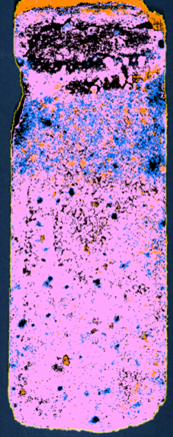 |
Type C | Type C |
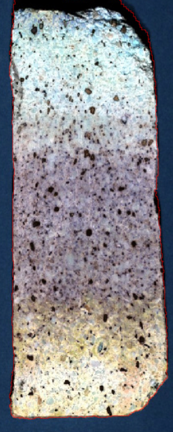 |
Brick Type A (used) | 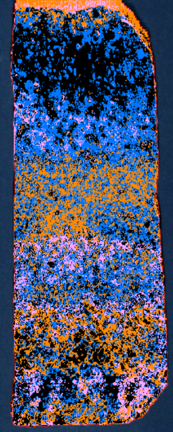 |
Type A | Type A |
The model was also trained on the average spectrum of the full 31 samples (not sub-segmented via a grid), both including used and original bricks, and was tested on theremaining 13 samples. When training based on the full sample segments instead ofdividing them by a 3x3 grid, the classification results seem to improve. The overallclassification matrix does not change radically. In the test set 92.3% of the samples arecorrectly classified, in the training data set 100% of the sample were classified correctly.The pixel-based prediction for the used bricks does not work as well visually whencomparing the results within Breeze (see Table 1 ). Especially the used bricks, show achange of composition over a profile from the hot to the cold face and the classifiercannot classify each pixel in the brick with the correct brick composition label. Figure 3 shows the change of spectral signal over the profile from hot to cold face within a used brick type A
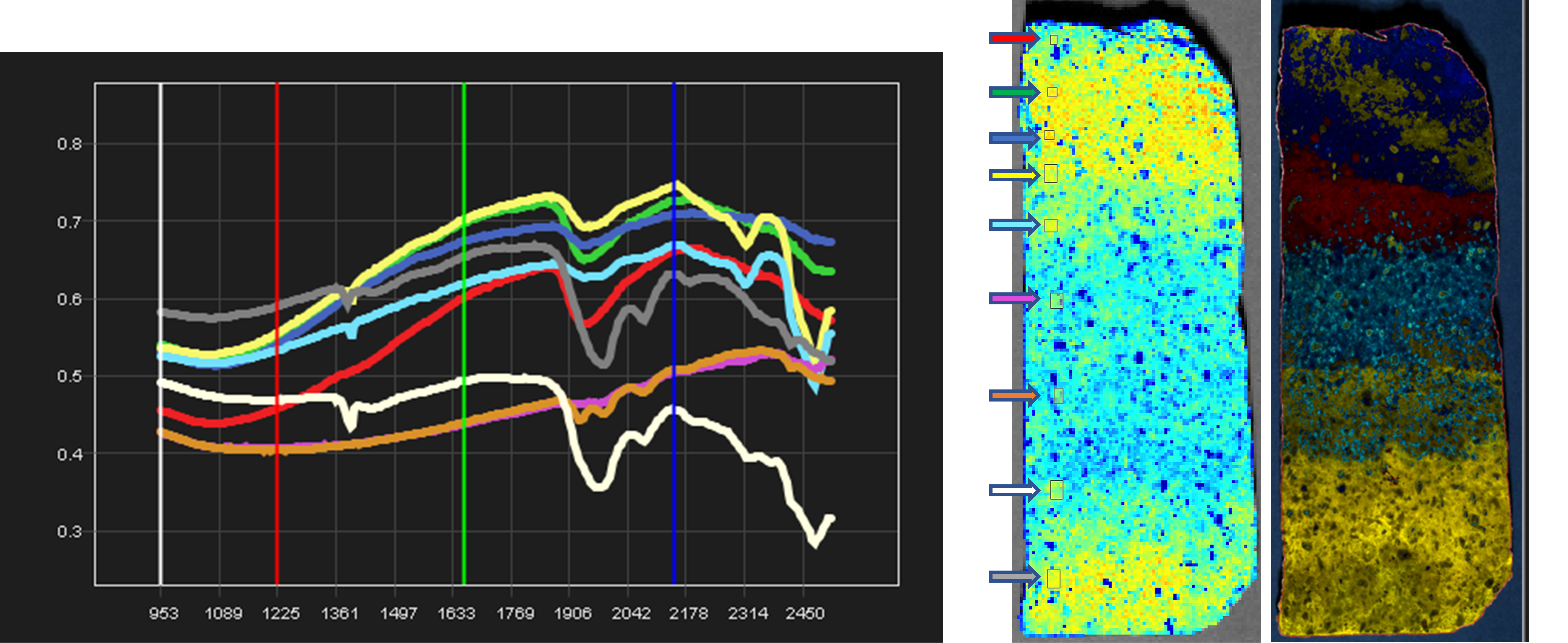 Figure 3: Left: plotted spectra, color-coding corresponding arrows in the center image.
Figure 3: Left: plotted spectra, color-coding corresponding arrows in the center image.
This feasibility study is part of Horizon-Europe funded ReSource project, showing howhyperspectral imaging can help identify refractory bricks and classify them spatially.Though more research is needed to give conclusive results, the initial ability to map thethree main CRK brick composition types using hyperspectral imaging is promising. It isalso important to highlight, that hyperspectral imaging enables to map of small-scalechanges in used bricks caused by mineralogical changes originating from changingtemperature and pressure as well as infiltration of gases during the brick's service. Thiswill change the surface and give indications of the brick's composition and re-usepotential.
HySpex offers a varied selection of turn-key solutions for mining and raw material-related studies as well as other scientific and industrial applications. Contact us to discuss your application and requirements with our specialists.
Samples and expert input were provided by RHI Magnesita. For more information aboutthe project see https://www.project-resource.eu/
This project is funded by the European Union’s Horizon Europe FrameProgram (HORIZON) under the Grant Agreement Number: 101058310.


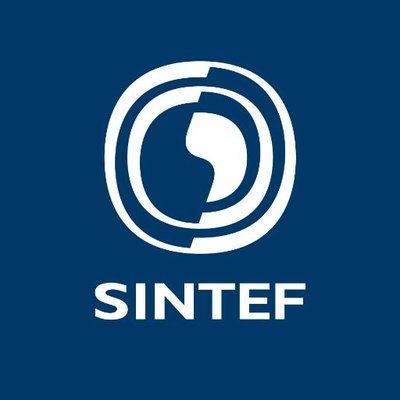



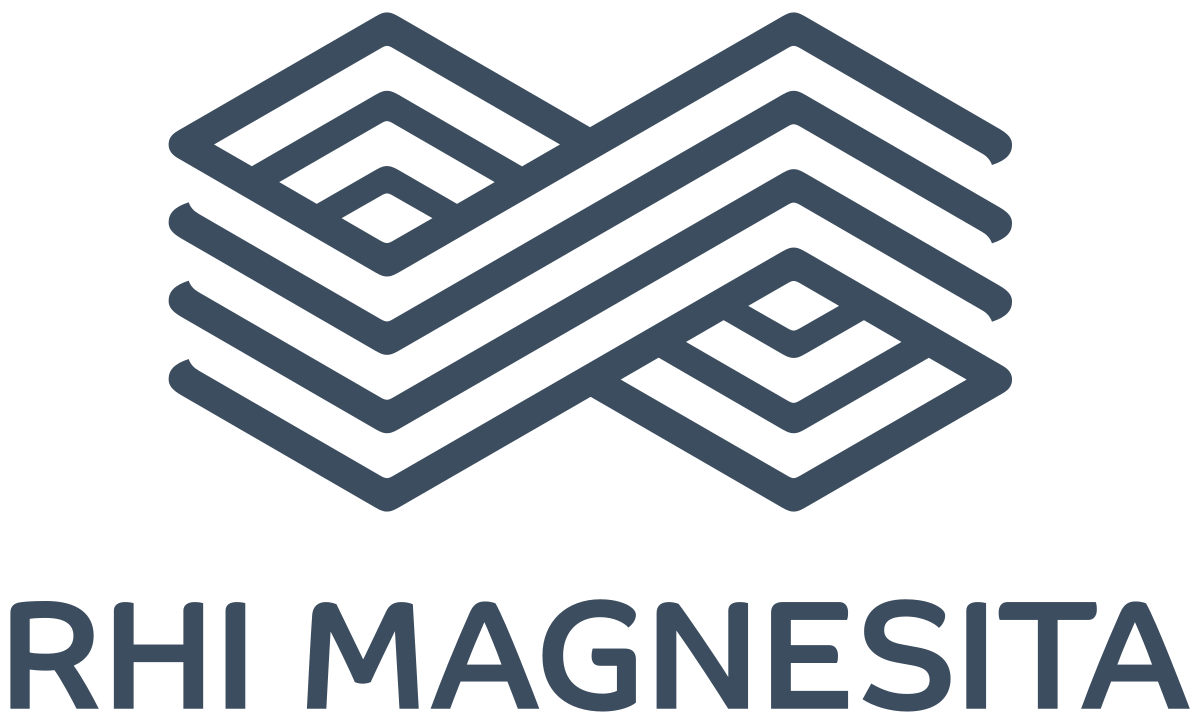


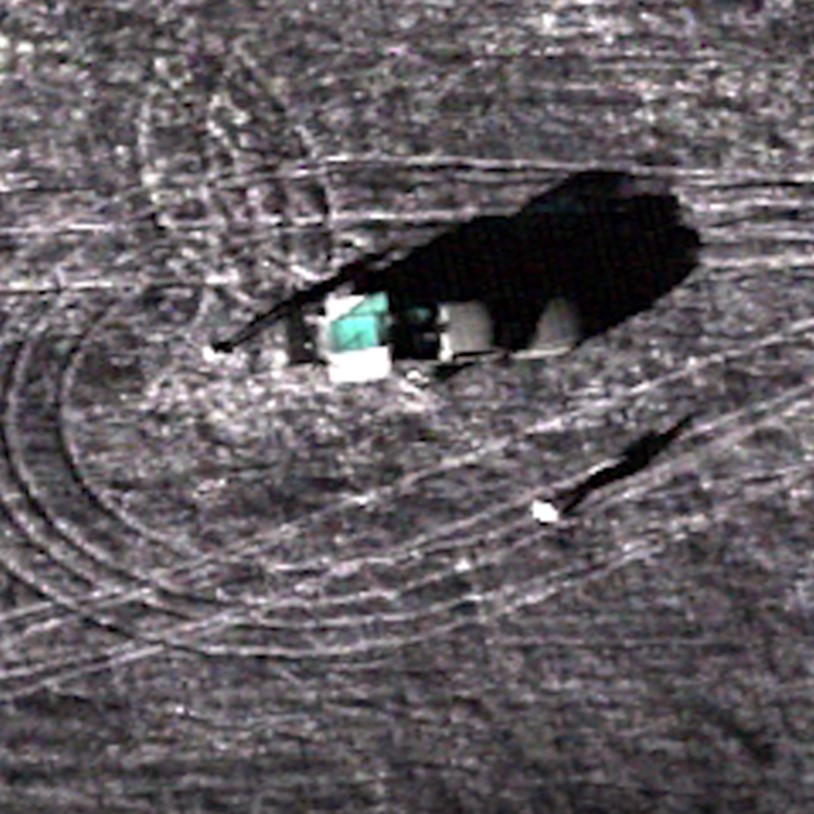
Methane Detection
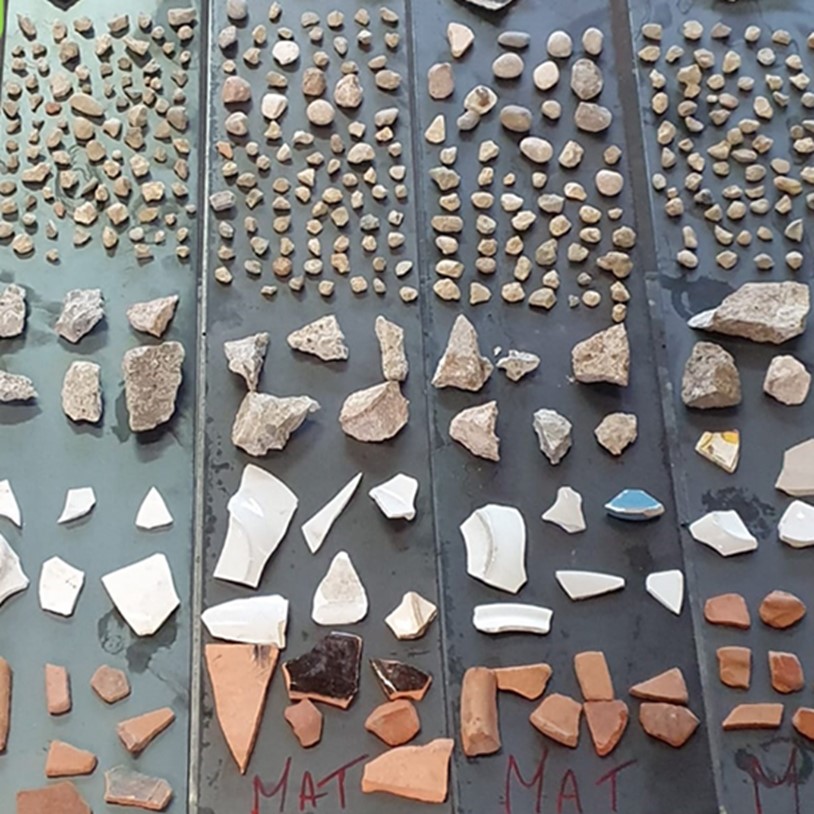
Asbestos
Hyperspectral Imaging for Ore Distinction

Hyperspectral Analysis of Powder Mixtures
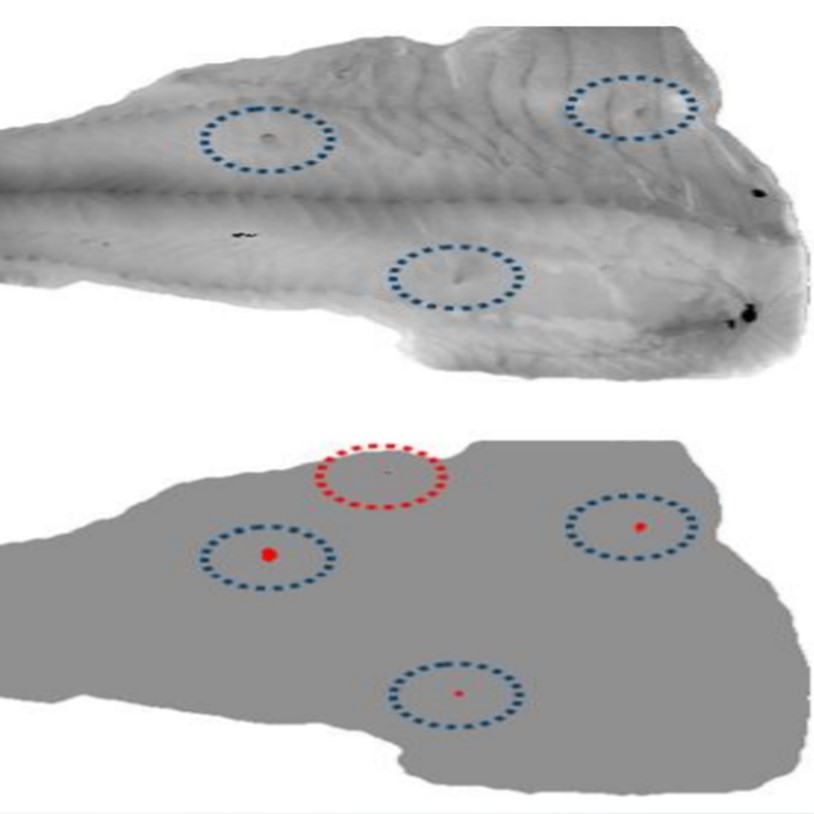
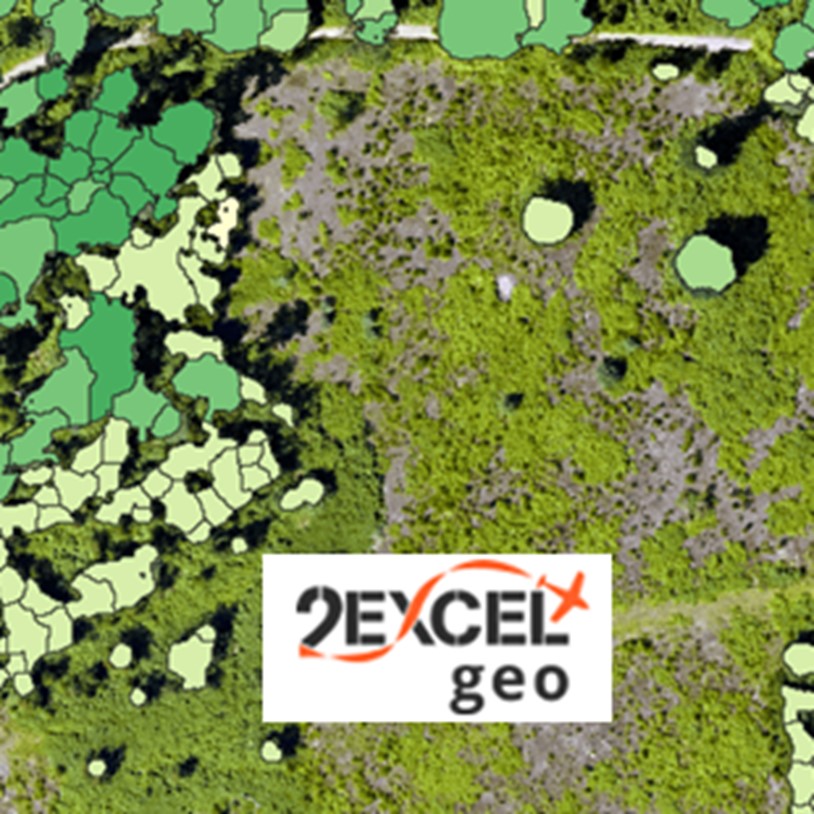
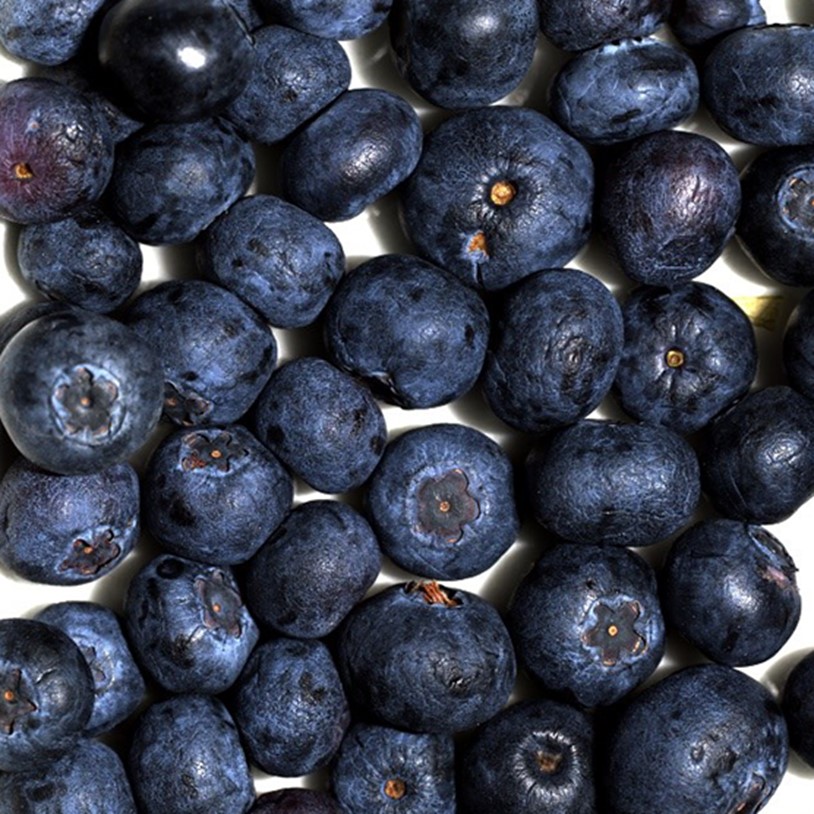
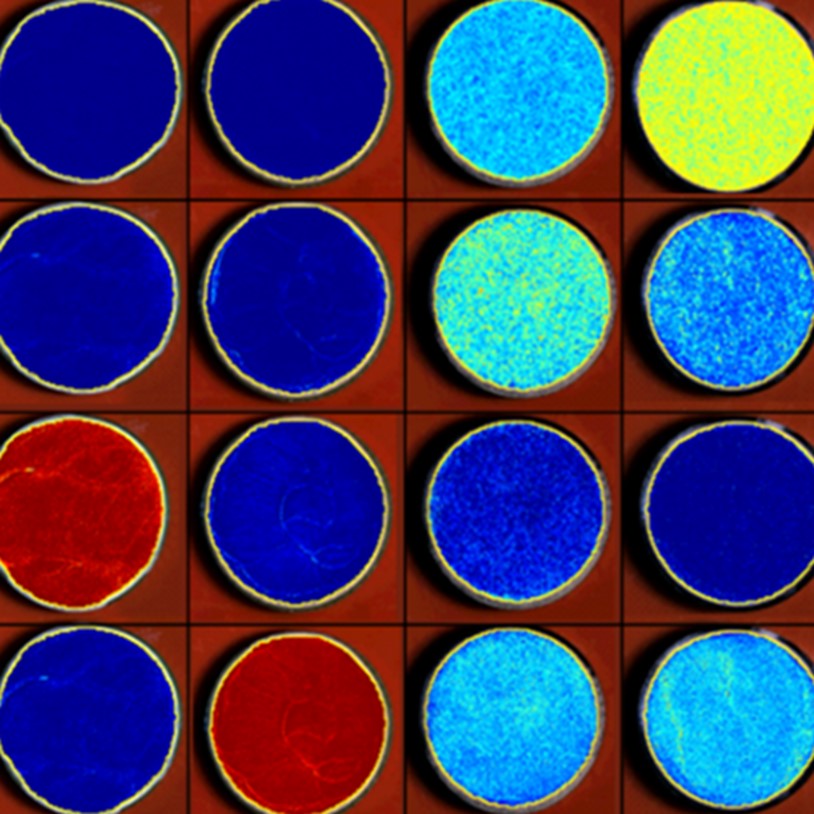
Pharmaceuticals
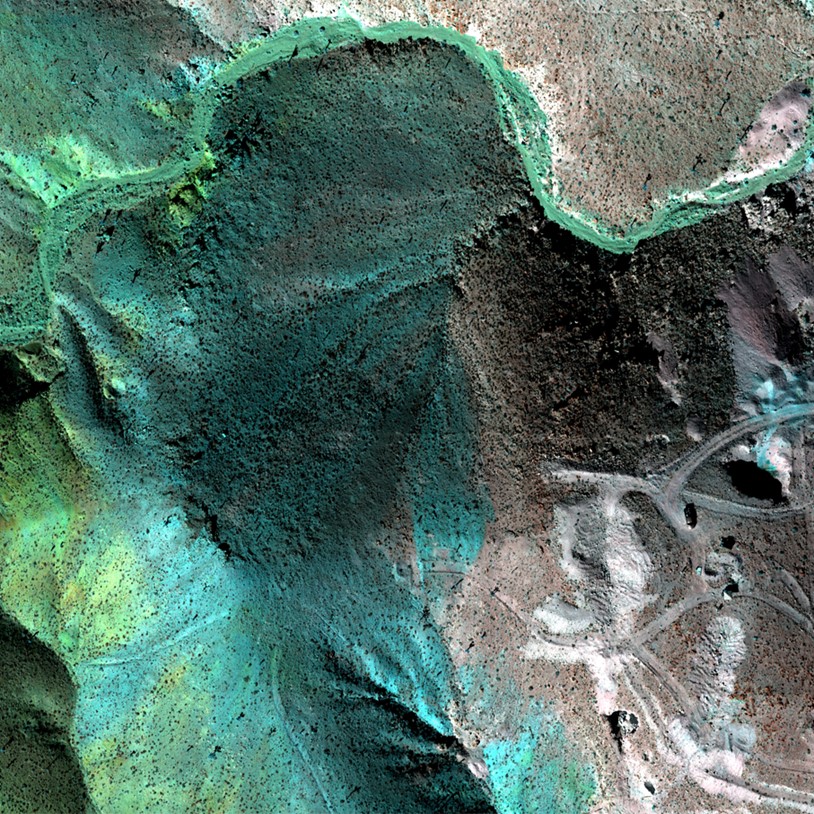
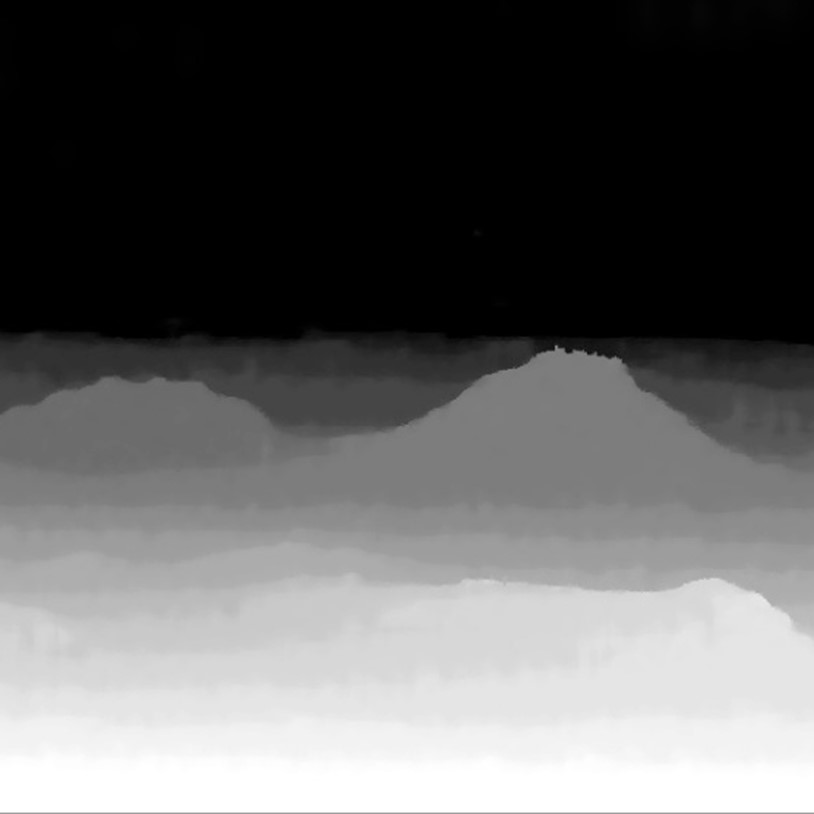
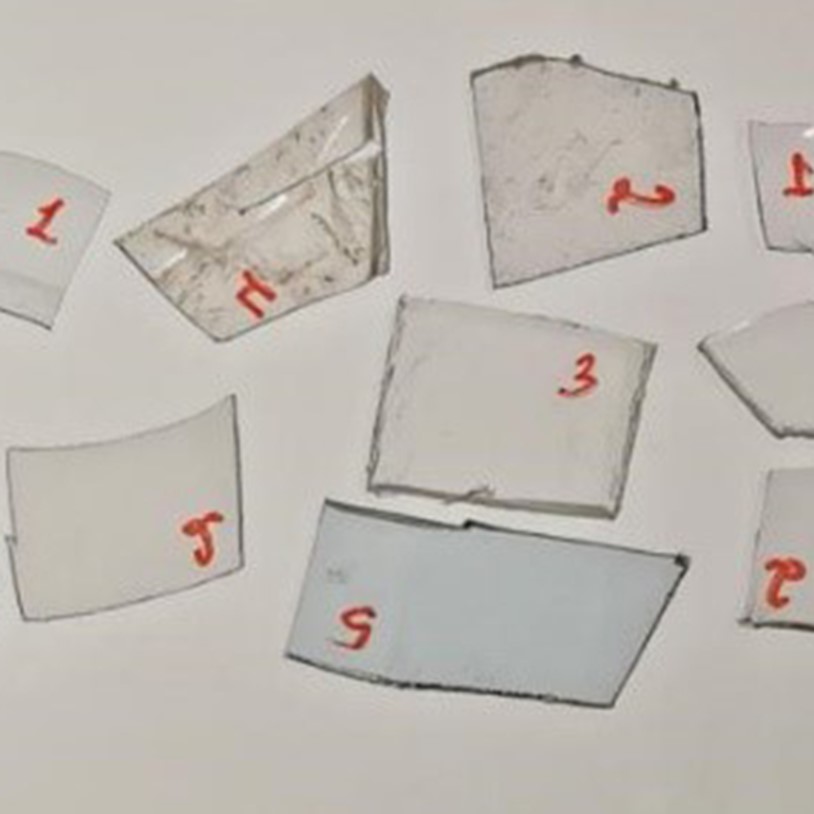
Plastic Sorting
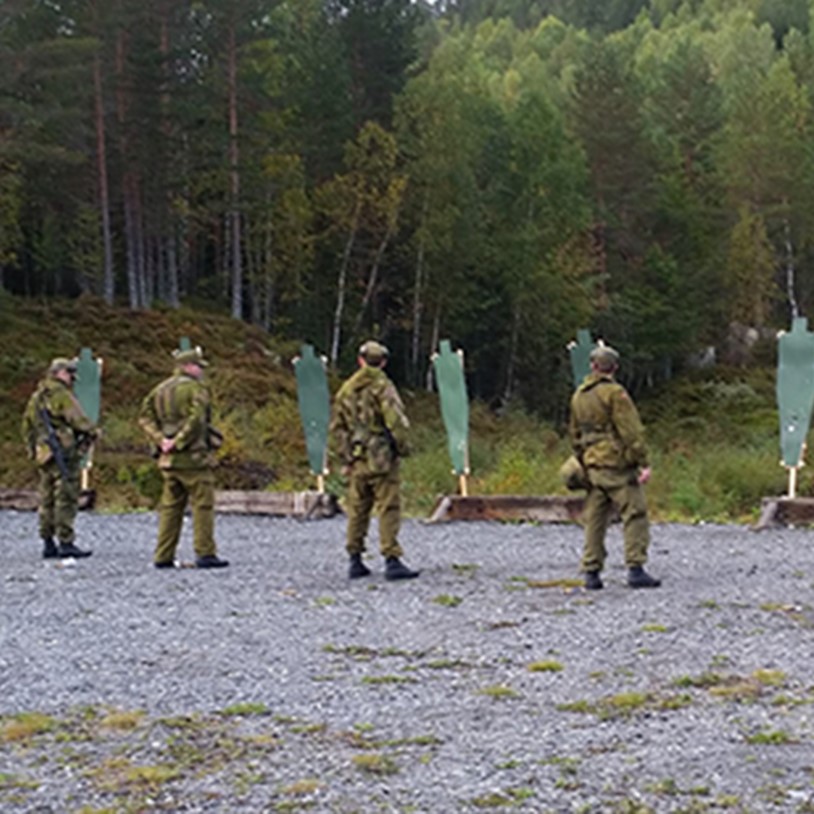
Explosives

Paper Recycling
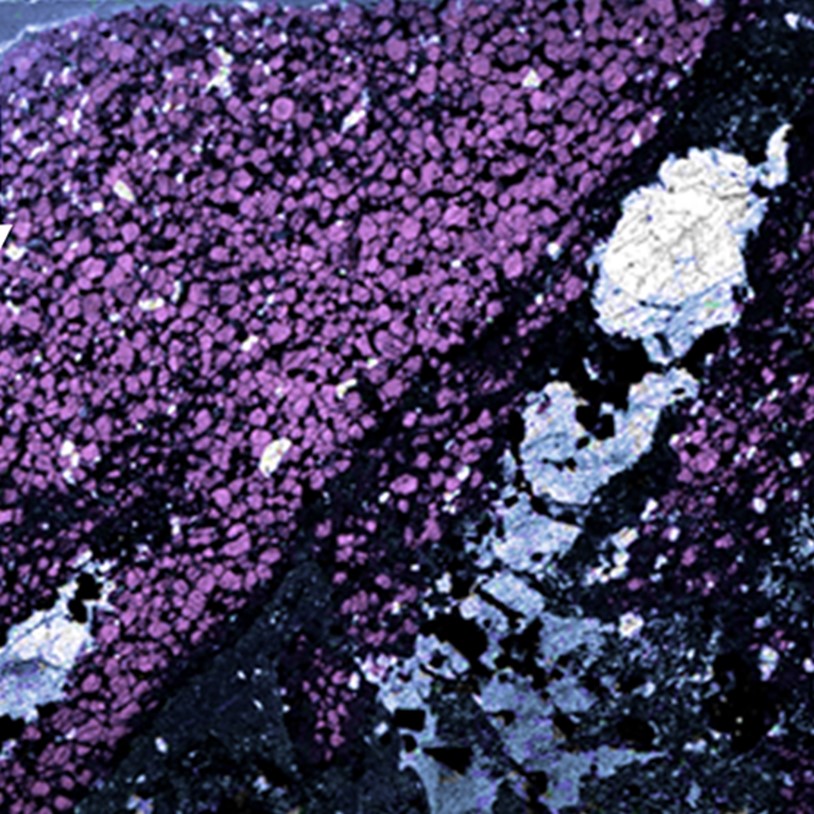
Rare Earth Elements

Coating thickness
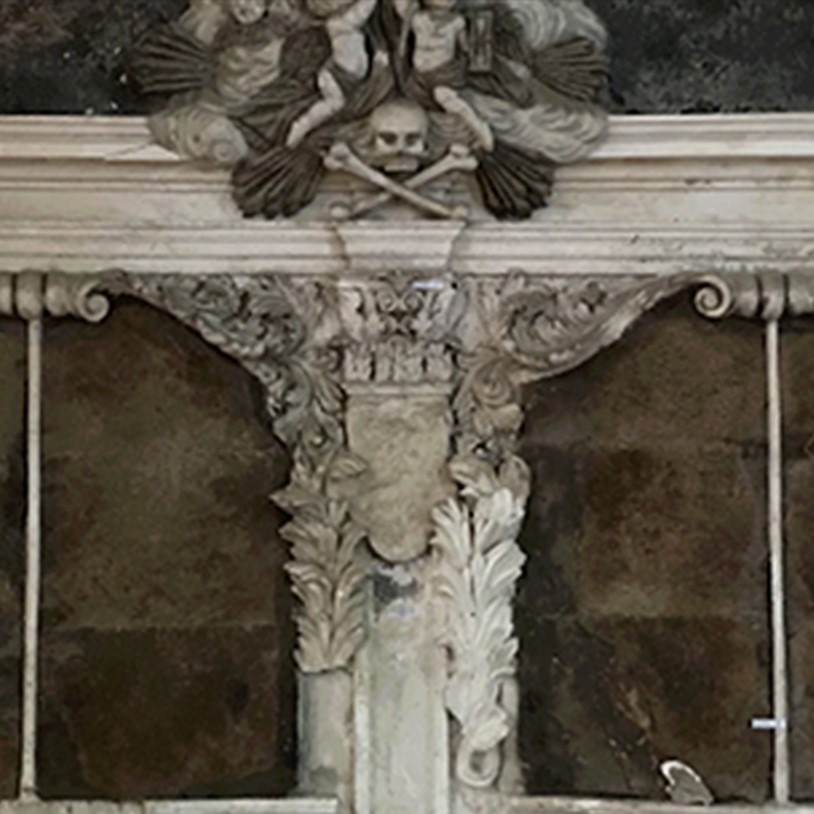
Monument Preservation

Cocoa Beans